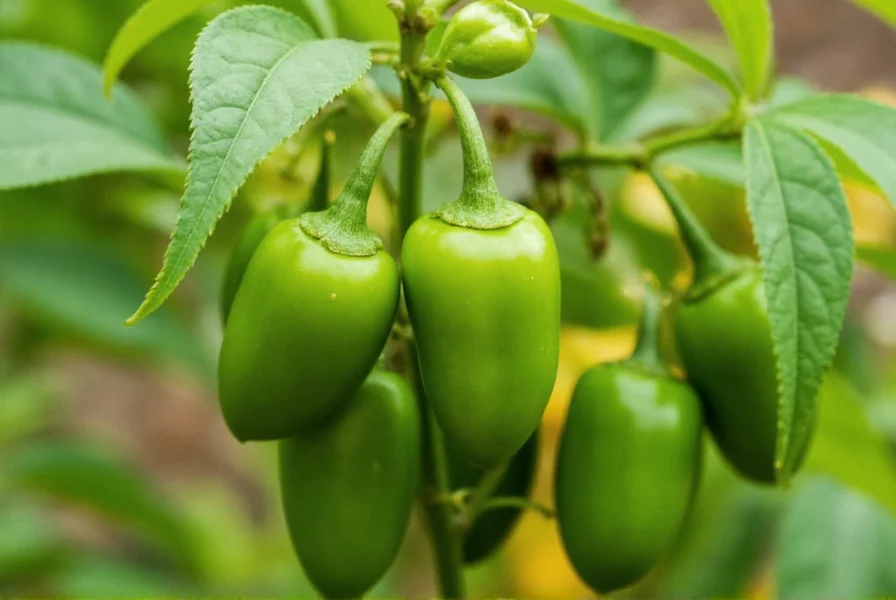When exploring the world of peppers, it's crucial to recognize there are actually two separate botanical genera that produce what we commonly call "peppers." The confusion arises because culinary terminology doesn't align with scientific classification. The vibrant chili peppers, bell peppers, and jalapeños belong to the Capsicum genus in the nightshade family (Solanaceae), while black pepper and white pepper come from the Piper genus in the Piperaceae family. This fundamental distinction explains why these "peppers" have dramatically different flavor profiles, growth requirements, and chemical compositions.
Understanding the Two Pepper Genuses
Many people assume all peppers belong to a single botanical category, but this couldn't be further from the truth. The scientific classification of pepper plants reveals two completely separate evolutionary lineages that converged on similar culinary functions through human selection.
Capsicum Genus: The Nightshade Peppers
The Capsicum genus contains the familiar chili peppers that range from mild bell peppers to fiery ghost peppers. Native to the Americas, these plants were spread globally following European contact with the New World. All Capsicum species produce capsaicinoids—the compounds responsible for their characteristic heat—which interact with pain receptors rather than taste receptors.
Five major species dominate cultivation worldwide:
- Capsicum annuum: Includes bell peppers, jalapeños, and cayenne peppers (most common cultivated species)
- Capsicum frutescens: Features tabasco and malagueta peppers
- Capsicum chinense: Contains the world's hottest peppers including habaneros and ghost peppers
- Capsicum baccatum: Known for aji peppers with distinctive fruity flavors
- Capsicum pubescens: Unique with black seeds and hairy leaves, including rocoto peppers
Piper Genus: The True Peppercorns
In contrast, the Piper genus produces what are botanically considered "true" peppers. Piper nigrum, the source of black, white, and green peppercorns, belongs to this genus. Unlike Capsicum peppers, Piper produces piperine as its primary pungent compound, which creates a different type of heat sensation. These vines are native to South and Southeast Asia and have been used as spice for thousands of years.
| Characteristic | Capsicum Genus | Piper Genus |
|---|---|---|
| Family | Solanaceae (Nightshade) | Piperaceae |
| Native Region | Central and South America | South and Southeast Asia |
| Primary Pungent Compound | Capsaicin | Piperine |
| Plant Type | Herbaceous perennial (grown as annual) | Vining perennial |
| Heat Sensation | Burning sensation on lips/tongue | Sharp, immediate heat in mouth |
Botanical Characteristics of Capsicum Species
The Capsicum genus demonstrates remarkable diversity despite sharing common ancestry. These plants typically feature white or purple flowers, berry-like fruits, and alternate leaves. Their flowers have five petals fused at the base, and the fruits develop from superior ovaries. One distinctive feature is how the seeds attach to the placenta inside the fruit—a characteristic that helps botanists identify Capsicum species.
Understanding the specific characteristics of different Capsicum species helps gardeners and farmers select appropriate varieties for their climate and culinary needs. For example, Capsicum chinense varieties generally require more heat and humidity than Capsicum annuum types, making them better suited for tropical regions.

Evolutionary History and Global Spread
The evolutionary history of Capsicum species reveals fascinating adaptation stories. Genetic evidence suggests these plants originated in what is now Bolivia and spread throughout the Americas before European contact. Indigenous peoples selectively bred these plants for thousands of years, creating the diverse array of pepper varieties we know today.
Christopher Columbus's mistaken identification of Capsicum fruits as peppers (due to their pungency resembling black pepper) created the enduring naming confusion. When these plants reached Europe and Asia, they rapidly integrated into local cuisines, often replacing more expensive black pepper in many dishes.
Culinary and Medicinal Applications
The distinction between Capsicum and Piper has significant implications for culinary applications. Chefs understanding pepper plant taxonomy can make more informed decisions about which peppers to use for specific dishes. The capsaicin in Capsicum peppers creates a heat that builds gradually and lingers, while piperine in Piper produces a sharper, more immediate heat that dissipates quickly.
Medicinally, these differences are equally important. Capsaicin has been studied for pain relief applications and is used in topical analgesics, while piperine enhances the bioavailability of other compounds, making it valuable in pharmaceutical formulations. Understanding the botanical characteristics of chili peppers helps researchers develop targeted health applications.

Growing Different Pepper Varieties
Gardeners interested in growing various pepper types should understand their different requirements. While all Capsicum species need warm temperatures, they vary in their ideal growing conditions:
- Capsicum annuum: Most adaptable, grows well in temperate climates with 60-90 frost-free days
- Capsicum chinense: Requires consistently warm temperatures (75-90°F) and high humidity
- Capsicum pubescens: Tolerates cooler temperatures than other species but cannot withstand frost
Soil pH between 6.0-7.0 works well for most varieties, though Capsicum baccatum prefers slightly more acidic conditions. Proper understanding of pepper plant taxonomy helps growers select appropriate varieties for their specific climate and soil conditions.
Preserving Pepper Biodiversity
As commercial agriculture focuses on a limited number of high-yield varieties, many heirloom Capsicum species face endangerment. Conservation efforts are crucial for maintaining genetic diversity within the pepper genus. Seed banks and specialty growers play vital roles in preserving rare varieties that may contain valuable traits for future breeding programs, including disease resistance and climate adaptability.











 浙公网安备
33010002000092号
浙公网安备
33010002000092号 浙B2-20120091-4
浙B2-20120091-4